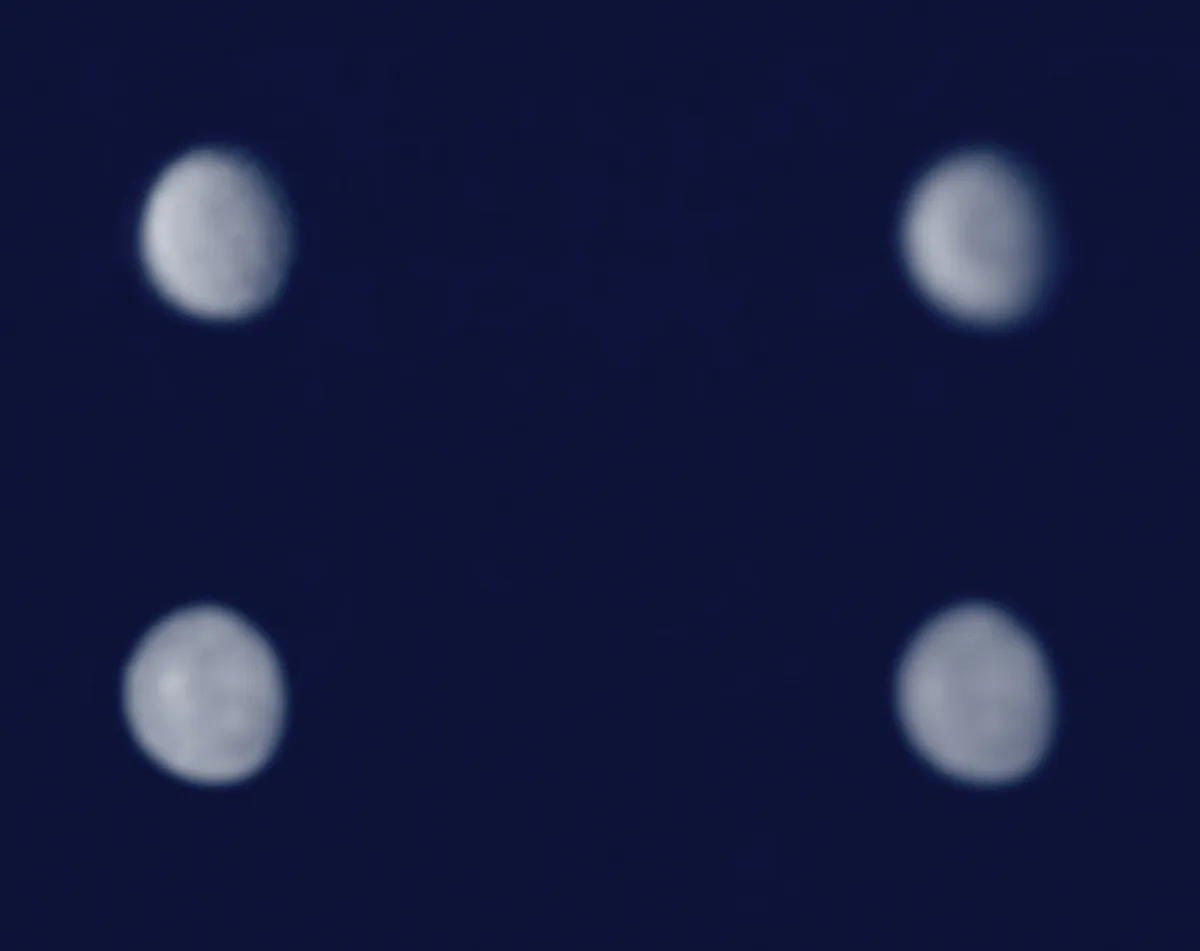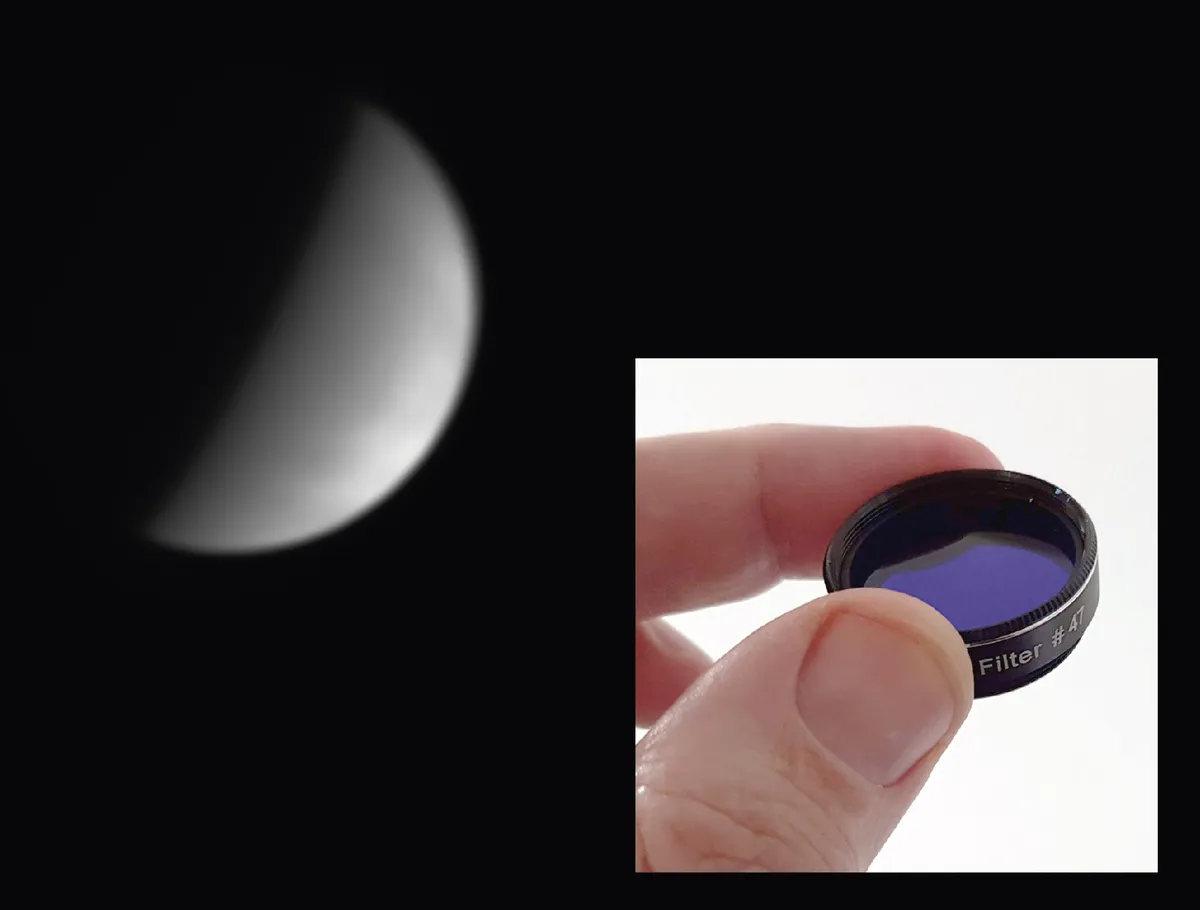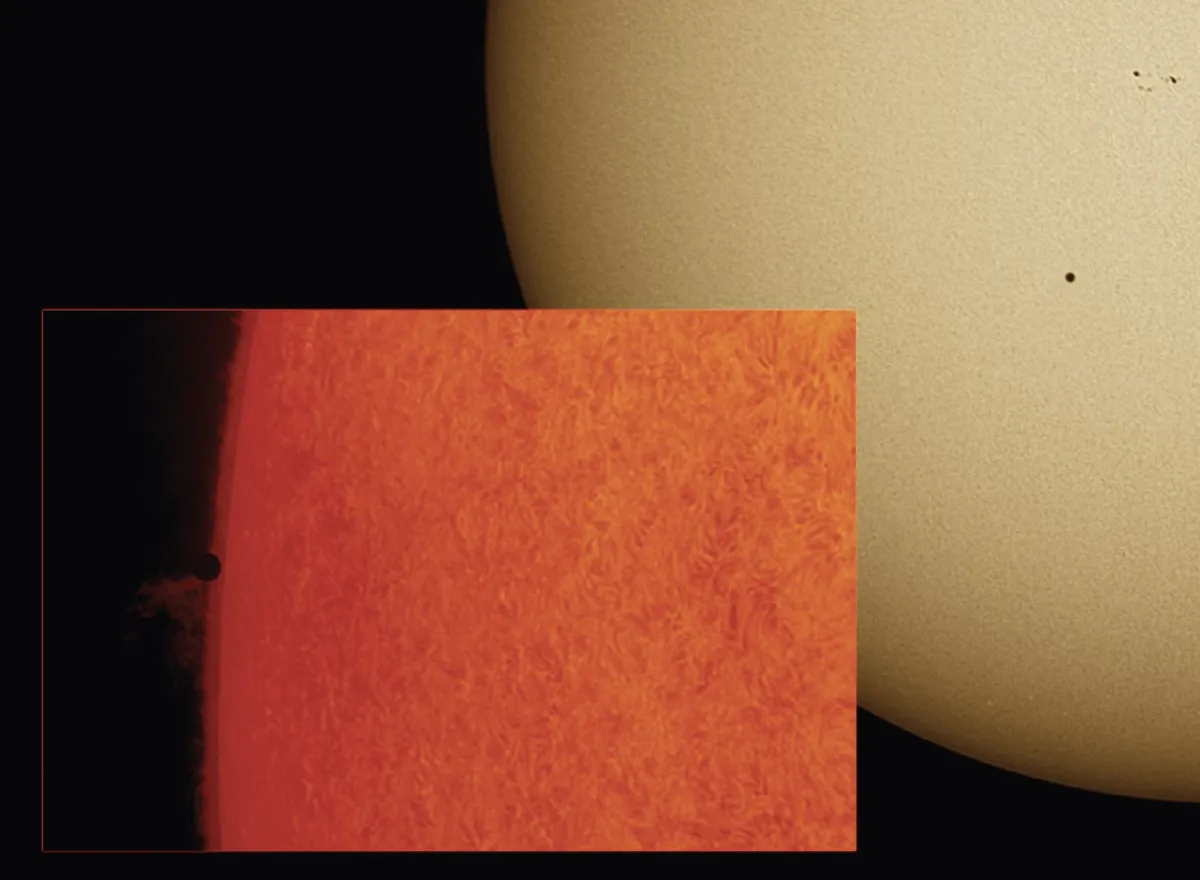Getting decent results when imaging Mercury and Venus is challenging, but the science value of the results can be great.
With care and dedication, both of these worlds have the potential to supply a lifetime of interesting results.
Advances in amateur imaging have opened up new territory that wasn’t possible to explore a few years ago.
The use of specialist filters allows more detail to be extracted as well as providing higher contrast views under certain conditions, such as in daylight for the inner planets Mercury and Venus.

How to photograph Mercury and Venus
The inferior planets Mercury and Venus both exhibit phases. Because it’s a rocky world, recording Mercury’s phase reveals few surprises, but what’s of more interest are images that show albedo variations on the planet’s surface.
Imaging Venus and Mercury for science purposes requires an appature larger than 8 inches (200mm) to achieve well.
Images of Mercury are best made during daylight hours when the planet is highest above the horizon. Using a red or infrared filter helps to increase the planet’s contrast, darkening the surrounding blue sky.
Read more astrophotography guides:
- How to use WinJUPOS
- How to photograph Venus with a digital video camera
- Photographing the planets with a Dobsonian telescope
Venus has a dense atmosphere, and images showing its phase through different filters provide data that records the planet’s phase anomaly.
This is most evident around dichotomy when the planet should, mathematically at least, appear exactly half lit.
In practice, the phase anomaly means that Venus reaches this phase early when it’s visible in the evening sky and late when it’s in the morning sky. The effect is believed to be related to how sunlight scatters in Venus’s atmosphere.

The Venusian atmosphere can respond well to certain filters. Most variation tends to become evident through shorter wavelengths filters, in particular ultraviolet.
Such filters can be expensive, although interesting imaging results have been obtained using visual purple filters (eg, Wratten #23A) fitted with an additional IR-blocking filter.
At the other end of the spectrum, near-infrared filters have been able to reveal the Venusian night-time hemisphere, typically when the planet appears as a thick crescent.
When Venus is a thinner crescent, some people (including William Herschel and Patrick Moore) have claimed you can see a phenomenon known as the Ashen Light, which makes the dark portion of Venus’s disc visible to the eye.

Others put these sightings down to observer error or equipment malfunction. To date, there have been no images to support visual reports of this effect. Could you be the first to capture proof of it?
Although the next transit of Venus is not due until 2117, transits of Mercury are more common and timed images of such events are always useful.
In particular timings through speciality filters, such as H-alpha, provide yet another dimension to this infrequent event.
Useful hardware & software
Hardware
- High-frame-rate cameras
- RGB imaging filters for use with a mono camera
- Speciality filters, eg, longpass
- Filter wheel
- Atmospheric dispersion corrector
- Large-aperture, long-focal-length telescope on a driven mount
- A laptop
Software
- WinJUPOS freeware
- Capture software, e.g. FireCapture or SharpCap
- RegiStax
- AutoStakkert!
- Image editor, e.g. GIMP or Photoshop
Pete Lawrence is an experienced astrophotographer and a co-presenter on The Sky at Night.

